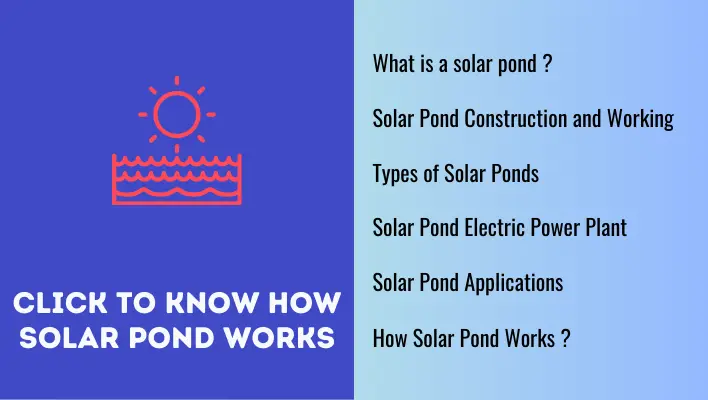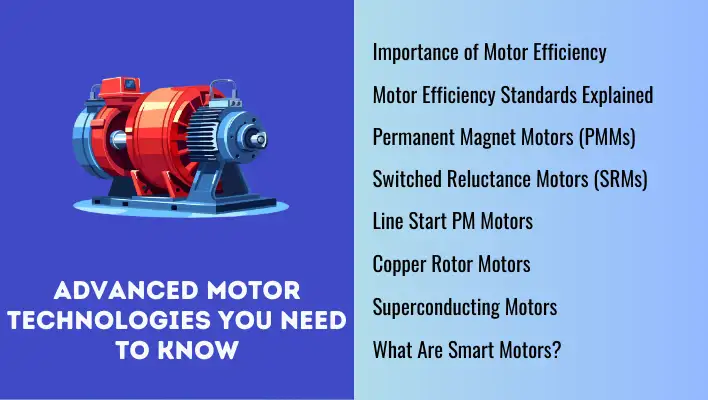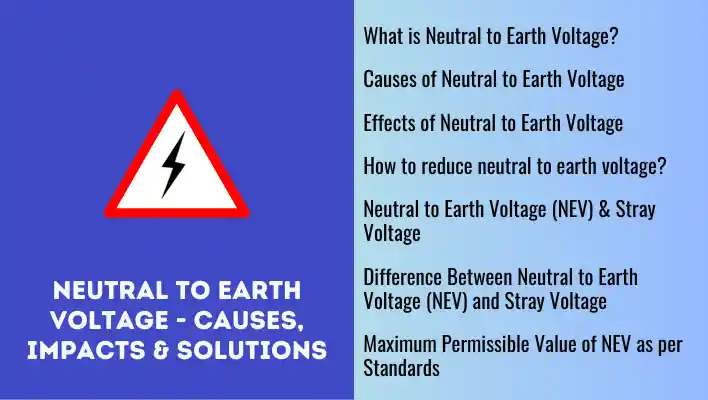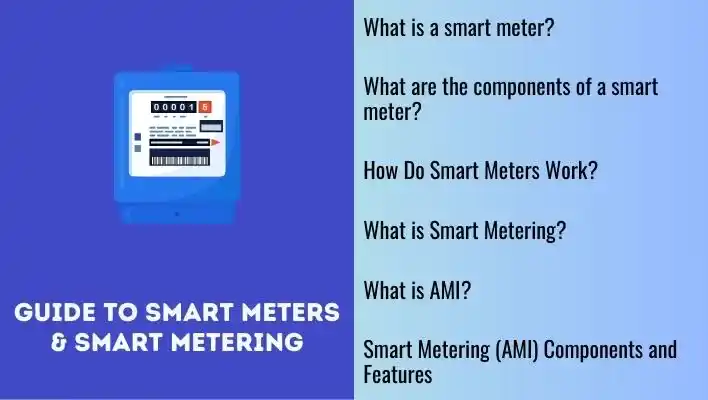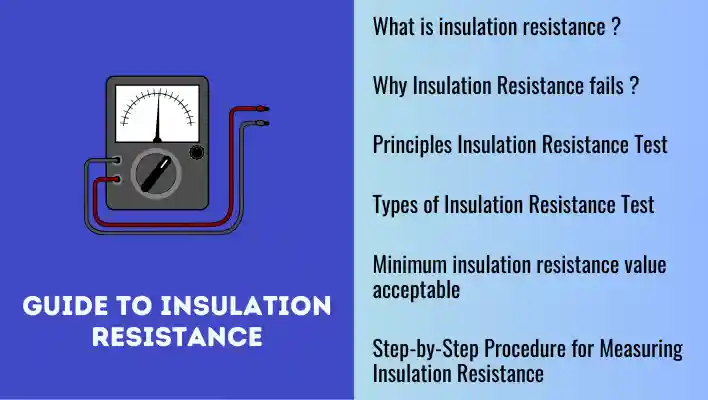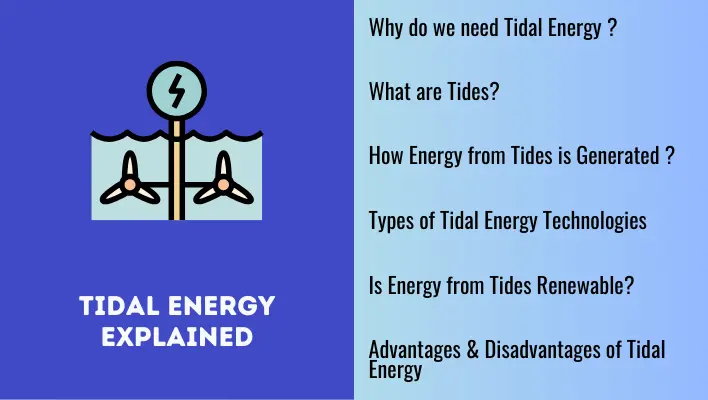A solar pond is an ingenious way to capture and store solar energy. The idea of solar ponds began to attract interest in the 1940s, and since then, people worldwide have been investigating their potential.
Solar ponds work by using layers of saltwater to trap heat, which can then be used for various purposes like generating electricity, heating buildings, or supporting industrial processes.
Despite their potential, solar ponds aren’t very common today. This is mostly due to the high costs involved in building and maintaining them. Keeping the layers of saltwater intact and managing the system requires significant effort and expense, which has limited their widespread use.
In this post, we will explore the technology behind solar ponds, the principles that make them work, how they are constructed and discuss their various applications. By the end, you’ll get a good understanding of how solar ponds could play a role in our energy future.
What Is Green Hydrogen? Definition, Uses, Benefits & Types
What is Solar Pond

A solar pond is a body of water that collects and stores solar energy in the form of heat which is then available to use for practical purposes.
To understand solar ponds, let’s first know how a regular natural pond behaves when it is exposed to sunlight and why it cannot store heat.
When the sun shines on a regular pond, it warms the water at the surface. As the sunlight travels deeper into the pond, its strength fades, so the top layer of water ends up being warmer than the water further down.
Regular ponds don’t have any special features to keep or hold onto that heat. Wind, waves, and changes in temperature mix the water, making the temperature quite similar throughout the pond.
Also, regular ponds usually contain freshwater or water with very little salt, which doesn’t stop the water from moving around. This means the heat in water at the top can easily mix with the cooler water below or escape into the air.
Since there’s nothing to hold the heat in, regular ponds lose heat in several ways: through evaporation, as warm water turns into vapor; through convection, as the warm water rises and spreads out; and through radiation, as heat is released into the cooler night air.
Now, let’s talk about solar ponds. Unlike regular ponds, solar ponds are designed to trap and store heat. They have a special structure with layers of water that have different levels of saltiness. The top layer has low salt content, the middle layer has more salt, and the bottom layer has the highest salt content. This layout of solar ponds prevents the water from mixing.
When sunlight hits a solar pond, the heat penetrates the top layer and gets absorbed by the salty layers below. The saltier water being dense, traps the heat, preventing it from rising back to the surface. This way, the bottom layer of the pond has higher temperatures, while the top layer remains cooler.
The trapped heat in the lower layers can then be used for various purposes, like generating electricity, heating buildings, or even industrial processes.
In summary, Solar ponds are an efficient way to capture and use solar energy because they store heat over a long period, unlike regular ponds where the heat quickly dissipates.
Biomass Energy Explained | Resources, benefits & Tech
Solar Pond Construction and Working
A solar pond is a man-made lake designed to capture and store solar energy. These ponds are built in such a way that they minimize both convection and evaporation to efficiently store solar energy. Various types of solar ponds exist, including saltwater ponds, gel ponds, and shallow ponds.
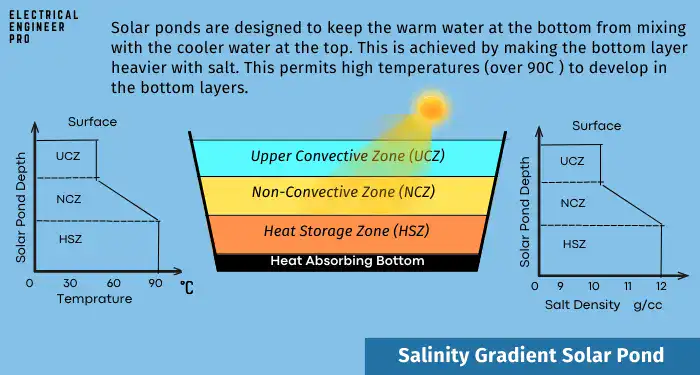
Let’s take an example of a saltwater pond to see how it’s constructed. A solar pond typically has three layers:
- Upper Convective Zone (UCZ)
- Non-Convective Zone (NCZ)
- Heat Storage Zone (HSZ)
The top layer of the pond, known as the Upper Convective Zone (UCZ), contains fresh water. This zone is where most of the heat loss occurs due to convection and evaporation.
Beneath the UCZ is the Non-Convective Zone (NCZ). This middle layer is made up of water with increasing salt concentration as you go deeper.
Because the water is denser at the bottom and lighter at the top, it stops the heat from rising up by convection and keeps it trapped in the pond through conduction. This layer acts like a blanket, letting heat through very slowly.
At the bottom of the pond is the Heat Storage Zone (HSZ). It’s lined with thick, tough plastic layers like butyl rubber, dark polyethylene, and hypalon mixed nylon mesh. This zone contains highly concentrated saltwater.
This dense concentrated saltwater is where the solar energy is stored as heat. A heat exchanger is typically installed in this layer to extract the stored thermal energy.
To keep track of what’s going on inside the pond, temperature sensors are placed at different levels. These sensors help monitor the heat variations in the pond. Also, hydrometers measure the saltiness to ensure each layer is well maintained.
Guide to Geothermal Energy | How Earth’s Power is Harnessed?
How Solar Pond Works
In a natural pond, around 30% of sunlight can penetrate down to about 2 meters, warming the pond’s bottom. But since warm water is lighter, it rises to the surface, loses heat to the air, and prevents the pond from heating up much more than the surrounding air temperature. This is why natural ponds aren’t good at storing heat energy.
Solar ponds, on the other hand, are designed to keep the warm water at the bottom from mixing with the cooler water at the top. This is achieved by making the bottom layer heavier with salt. This allows high temperatures of over 90°C to appear in the bottom layers.
Commonly used salts like sodium chloride or magnesium chloride are used. This approach is used in “salinity gradient ponds.”
Salinity Gradient Solar Ponds have three main layers:
- Lower Mixed Zone: This is the bottom layer, where the water is the hottest and densest, absorbing and storing heat from sunlight.
- Upper Mixed Zone: The top layer is the coolest and least dense. It’s mixed by wind, evaporation, and cooling at night.
- Non-Convective Zone (NCZ): The middle layer acts as a barrier, stopping the warm bottom water from mixing with the cooler top water. It allows sunlight to pass through but prevents heat from escaping, with heat moving only by conduction.
Typically, the upper mixed layer is about 0.5 meters thick, the non-convective layer is about 1 meter thick, and the lower mixed layer is also about 1 meter thick.
These layers work together to trap and store heat, making solar ponds an effective way to harness and store solar energy sustainably.
Types of Solar Ponds
There are two main types of solar ponds: convective and non-convective. In non-convective ponds, heat loss is minimized by transferring heat through fluid movement, known as convection. On the other hand, convective ponds trap heat by stopping evaporation instead of relying on convection.
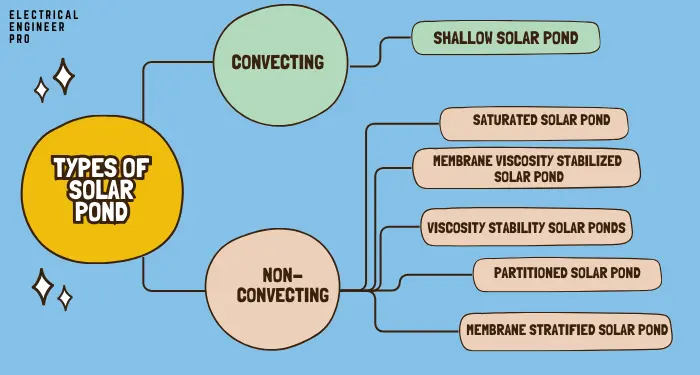
Both non-convective and convective solar ponds can be further divided into different categories:
Salinity Gradient Solar Ponds
This type is explained in the section How solar ponds work.
Partitioned Solar Pond
Unlike traditional solar ponds that depend on layers of salty water to trap heat, partitioned solar ponds use physical barriers to keep different temperature zones separate.
Several issues can arise with solar ponds. Dirt can reduce the water’s clarity, evaporation can increase the salt concentration at the surface, and extracting heat can disturb the temperature layers. Partitioned solar ponds address these challenges by using two transparent partitions. One is placed just below the surface, and the other is positioned about 1-2 meters deep.
These partitions offer several benefits. Because water has a lower tendency to reflect light compared to plastic, using water reduces reflective losses. The deeper partition helps keep the warm, insulating layer stable and separate from the cooler, circulating layer, making the pond more efficient at storing and extracting heat.
Viscosity Stability Solar Ponds
In a viscosity stabilized solar pond, the key component is a thick, jelly-like (viscous) substance called a polymer gel. This gel sits at the top of the pond, held in place by clear, see-through films.
It’s lighter than water and allows sunlight to pass through easily, heating the water underneath. The gel works like a blanket, keeping the heat from escaping while also stopping the water from mixing. This is important because it ensures that the heated water stays at the bottom from where the heat can be extracted.
Unlike other solar ponds that use layers of salty water to prevent mixing, this type uses the gel’s thickness to do the job. While this idea shows potential, it currently isn’t as cost-effective as traditional solar ponds that use salt gradients.
Membrane Stratified Solar Pond
A membrane stratified solar pond is a unique type of solar pond that doesn’t use salt. Instead, it relies on layers of clear, see-through membranes to trap heat. These membranes are placed very close together to prevent the water from mixing and losing heat.This setup helps the pond collect and hold onto the sun’s heat.
In these types of solar ponds, the weight of the water balances out the natural tendency of warm water to rise, so the heat from the sun gets stored effectively.
There are three main designs for these membranes: they can be arranged as horizontal sheets, vertical tubes or vertical sheets. Each design has its own way of optimizing how well the pond captures and retains solar energy.
The use of membranes instead of salt in these particular solar ponds makes them easier to manage and maintain while still being efficient in storing solar energy.
Saturated Solar Pond
When it comes to solar ponds, maintaining the right balance of salt can be a real struggle. But there’s a solution to this: the saturated solar pond. Unlike the regular salt gradient solar ponds, which need constant care to keep the salt layers in check, a saturated solar pond is filled with salt that dissolves more as the temperature goes up. This means you don’t have to worry about salt mixing around because the pond naturally keeps everything stable based on the local temperature.
Membrane Viscosity Stabilized Solar Pond
This type of solar pond uses membranes and viscosity control to keep the pond’s heat and salt concentrations steady.
Membranes work like barriers that help control the movement of salt and water between different layers in the pond. This prevents the layers from mixing too much, which is important because it helps keep the heat where it needs to be.
To further enhance this stability, the pond adds substances that make the water thicker in the Non-Convecting Zone (NCZ). This thicker water resists movement, which helps to keep the temperature steady and heat is stored effectively.
Shallow Solar Pond
In a shallow solar pond, the water level is kept quite low, usually just a few centimeters deep. This type of solar pond is covered with a plastic film that touches the surface of the water.
This helps in keeping the water from cooling down too quickly because of evaporation. Despite its depth of a few centimeters, this method can heat a substantial amount of water effectively, making it one of the most cost-efficient ways to harness solar power.
During the day, sunlight is converted into heat, warming up the water in the pond. This heated water can be collected and used or stored before sunset. Shallow solar ponds are particularly useful for short-term energy storage because they heat up quickly, providing a fast and efficient way to capture and use solar energy.
Power of Solar and Solar Energy technologies Explained
Solar Pond Electric Power Plant
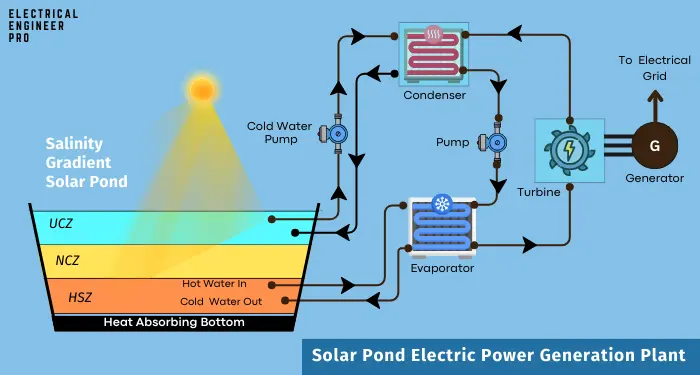
Solar ponds can reach temperatures between 70-100°C, making them ideal for collecting solar energy. Engineers have been exploring various ways to generate power from these ponds, and while many designs aren’t yet viable for large-scale power supply, ongoing advancements hold promise for the future.
One innovative approach involves combining a solar pond with a flat plate power generation unit. In this configuration, the heat stored in the pond is used to generate electricity through thermoelectric cells. This method shows potential, but more research and development are needed to make it widely applicable.
Another exciting development is the use of a salinity-gradient solar pond in tandem with thermosyphon and thermoelectric cells. This combination is still being studied, but it could soon lead to commercial applications.
One of the most accepted techniques for generating electricity from solar ponds is through the organic Rankine cycle (ORC). The ORC system aligns perfectly with the solar pond’s structure.
Here’s how it works: The top layer of the pond, which is cooler, acts as a cold source to cool the condenser, while the warmer bottom layer provides heat to the evaporator.
Power plants utilizing the Rankine cycle have already been built and are operating in various locations around the world.
What’s impressive about solar ponds is their ability to store large amounts of heat, depending on their size and depth. This stored thermal energy allows them to supply power around the clock, making them a reliable energy source.
In fact, solar pond power plants can provide consistent base-load power with load factors between 0.8 and 0.9.
To conclude, solar ponds provide a unique and eco-friendly method for producing electricity. Although there are some hurdles to address, the potential advantages make this a fascinating field in renewable energy research.
Solar Pond Applications
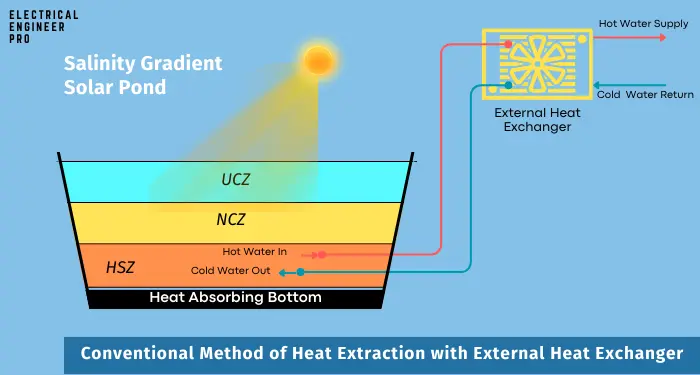
1. Heating and Cooling Buildings: Solar ponds are great for heating and cooling buildings because they can store a lot of heat in their lower layers. This means they can keep buildings warm even in colder climates or during cloudy days.
2. Generating Electricity: Solar ponds can also be used to produce electricity. They do this by driving special engines that turn heat into power. This method works really well in sunny areas where there’s enough space to build big solar ponds.
3. Providing Heat for Industrial Processes: Many industries need heat to make products, and solar ponds can provide this heat efficiently. Studies have shown that the heat from solar ponds can be as cost-effective as using oil or natural gas.
4. Desalinating Water: Solar ponds can be used to purify water, making it safe to drink or use for irrigation. This process, called desalination, is especially useful in areas with limited access to fresh water but plenty of salty or brackish water. A well-designed solar pond can produce thousands of gallons of fresh water daily.
5. Heating Animal Shelters and Drying Crops: On farms, solar ponds can provide low-grade heat for warming animal housing and drying crops. This is a practical solution for farms with enough land to build these ponds.
6. Converting Biomass: Solar ponds can also be used to convert biomass into fuels like alcohol or methane. Although this hasn’t been widely implemented yet, it’s a promising combination of two renewable energy sources.
Renewable Energy Systems | A comprehensive explanation
Solar Pond FAQs
Can solar ponds be integrated with other renewable energy systems?
Yes, solar ponds can complement other renewable energy systems like photovoltaic panels or wind turbines, providing a stable source of thermal energy that can be used when other energy sources are intermittent.
How does the salinity gradient affect the performance of a solar pond?
The salinity gradient is crucial for a solar pond’s performance. It prevents heat from escaping, allowing the bottom layer to reach high temperatures and store energy efficiently.
What are the environmental impacts of solar ponds?
Solar ponds have minimal environmental impact compared to conventional energy sources. However, potential issues include land use, the effect on local ecosystems, and the management of saline water.
Can solar ponds be used in any location?
Solar ponds are most effective in regions with high solar radiation and access to saline or brackish water. They are less effective in areas with low sunlight or where freshwater resources are limited.
How efficient are solar ponds in energy storage?
Solar ponds have an efficiency rate of about 15-20% for converting solar energy into usable thermal energy. Their efficiency in storing heat can be high due to the thermal insulation provided by the salinity gradient.
What is the heat storage capacity of a solar pond?
The heat storage capacity of a solar pond depends on its size, depth, and salinity gradient. Typically, a well-maintained solar pond can store substantial amounts of heat, with temperatures in the lower layers reaching up to 85-90°C (185-194°F).
What types of salt are used in solar ponds?
Common salts used in solar ponds include sodium chloride (table salt) and magnesium chloride. The choice of salt depends on availability, cost, and the specific requirements of the solar pond.

